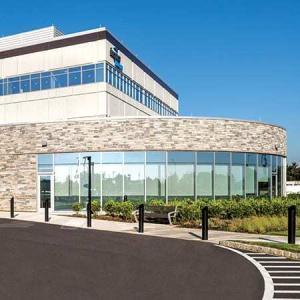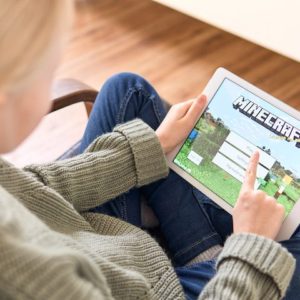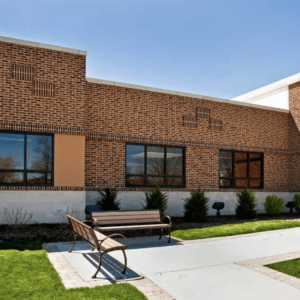Today’s building owners and code requirements demand sustainable, healthy, and durable structures. To meet these demands, all layers of the building envelope must work to control moisture infiltration and accumulation, including the finish surface layer. The building products industry is continuously looking for new technologies to assist with the prevention of water damage. In recent decades building scientists have improved a building’s moisture management by creating new, innovative products that mimic biological processes to minimize moisture intrusion.
For instance, building scientists developed hydrophobic acrylic coatings to enhance exterior walls’ weather resistance. Hydrophobic coatings more effectively repel water than traditional paints and coatings by copying the waterproofing properties of lotus flowers.
The Lotus Effect
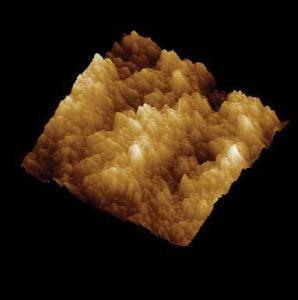
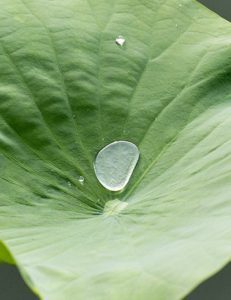
A lotus leaf microstructure magnified 7000 times. Lotus Leaf
A coating of tiny wax pillars (less than 100 microns apart) covers the lotus plant’s leaves, which helps to keep the plant clean and waterproof. Water’s high surface tension does not allow it to penetrate through the pillars and into the leaf, which creates a hydrophobic effect that forces moisture to bead and roll off the leaf. As the beads roll off the leaf, they pick up dirt particles, which keeps the lotus leaves dry and clean — the lotus effect.
StoColor® Lotusan® Mimics the Lotus Leaf
Smooth, super-hydrophobic StoColor® Lotusan® is a vertical, above-grade exterior wall coating with Lotus-Effect® technology used to create hydrophobic stucco, masonry and EIFS, concrete, and previously painted wall surfaces.
Problems with Traditional Exterior Wall Coatings
Traditional building exterior coatings lack resistance against many outdoor elements (impact, pollution, organisms, bulk water, temperature, and ultraviolet (UV) rays), which may affect the structure’s integrity and the occupant’s comfort and safety:
- Impact: Hail, flying debris, building movement, ladders, etc., can all cause abrasions and compromise exterior cladding coatings and paint.
- Pollution: Nitrogen oxides, dust, smoke, soot, nitrates from fertilizers, etc., can all deteriorate a facade’s coatings.
- Biological Organisms: Mildew and fungi can create an unattractive green appearance and decrease the coating’s effectiveness. In humid climates, fungal growth can bond to coatings that make it difficult to remove and that leaves a deposit on the coating’s surface.
- Bulk Water: Rain, snow, dew, humidity, etc., can cause a traditional water-based coating to soften, which makes it tacky and it attracts dirt that will not wash away easily.
- Temperature and UV: Hot temperatures and UV rays can degrade coatings on the exterior of buildings, which can make them fade after years of exposure.
Hydrophobic Coatings – A Better Solution to Traditional Exterior Coatings
Hydrophobic microstructure coatings minimize the exterior wall’s contact with water and dirt by mimicking the lotus leaf’s water-repellent surface and self-cleaning capabilities.
Measuring Hydrophobicity of a Coating
Manufacturers measure hydrophobicity by placing a water droplet on the material’s surface and observing the angle as the droplet moves – the contact angle. The greater the contact angle, the higher the hydrophobicity.
The higher the hydrophobicity, the more the water will roll off the wall, taking away dirt and allowing the wall to dry faster. Hydrophobicity protects a building’s exterior and long-term value by resisting water, mold, extreme temperatures, UV rays, dirt, and staining.
The Benefits of Super-Hydrophobic Coatings
Super-hydrophobic acrylic coatings, for new construction or recoating of existing buildings, repel water and dry quickly. The process reduces the opportunity for mold, mildew, dirt, and other pollutants to stick or grow on the surface. Super-hydrophobic acrylic coatings help maintain the building’s exterior aesthetic and benefit the building owners by lessening maintenance, enhancing the wall’s integrity, and lowering costs:
Low-Maintenance
The water-shedding properties of hydrophobic coatings ensure rapid drying and dirt removal that will produce a coating that lasts up to ten years, compared to traditional coatings that last two to three years. Therefore hydrophobic coatings have less long-term maintenance costs. In addition, hydrophobic acrylic coatings often include silicone polymer technology, which provides longer fade resistance durability than traditional acrylic coatings.
Long-Term Integrity and Appearance Benefits
Hydrophobic coatings resist mold, mildew, algae, UV, and weather, which improves the exterior wall’s long-term appearance and integrity.
Lowers Long-Term Costs
Hydrophobic coatings create durable facades, which can eliminate yearly pressure washing and allow for longer intervals between recoating – which reduces the total cost of ownership. Over two decades, hydrophobic coatings may save almost 80 percent of the total cost of a standard coating product.
Super-Hydrophobic StoColor® Lotusan® Coating
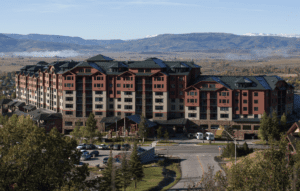
StoColor® Lotusan® is a highly water-repellent surface coating with LotusEffect® Technology. It keeps buildings’ facades attractive and clean while saving money on recoating and maintenance. In addition, simple and seamless to apply StoColor® Lotusan® comes in many colors within the StoColor Systems.
StoColor® Lotusan® offers three significant features: super-hydrophobic, vapor permeability, and UV resistance:
1. Super-hydrophobicity offers:
- Excellent water repellency
- Superior resistance to dirt
- Enhanced resistance to mold, mildew, and algae
2. Vapor permeability ensures that the substrate will breathe naturally, to resist blisters caused by trapped water vapor.
3. UV resistance ensures a facade with excellent color retention.
Self-Cleaning StoColor® Lotusan®
StoColor® Lotusan® works perfectly for new construction and recoat projects over concrete, stucco, EIFS, and fiber cement board and primed or pre-painted wood substrates. The self-cleaning feature of super-hydrophobic StoColor® Lotusan® effectively protects the facade by providing the following features:
- High level of water- and dirt-repellent after the coating dries
- Superior weather and chalk resistance
- UV-stable
- Resists the growth of mold, mildew, and algae
- High water vapor permeability
- Smooth matte (flat) surface
Protect Exterior Walls with StoColor® Lotusan® Super-Hydrophobic Coating
Super-hydrophobic StoColor® Lotusan® exterior coating with Lotus-Effect® Technology allows rain and dirt particles to flow off the coating surface, like the rain droplets that fall on the lotus leaf, in order to keep the facade dry and attractive while also saving money on maintenance and recoating.
For more on hydrophobic coatings and finishes for exterior wall systems, don’t hesitate to contact the Sto professionals today at (800) 221-2397.
